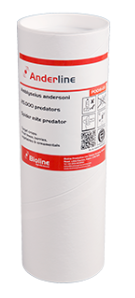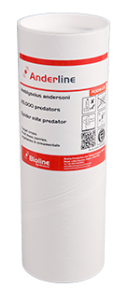
Red Spider Mite Control - Amblyseius Andersoni single application
£70.00
Unit price perPredatory mite for the treatment of Red Spider Mite
Bulk tubes provide an immediate dose of mites, offering immediate protection to your plants. Available as loose material in cardboard tubes containing 25,000 mites, this will provide one application. If you are looking for a longer term solution then the slow release sachets are a great product.
Spider Mites are less than 1mm in size and difficult to see without a lens or microscope unless you have very sharp eyes. They often live underneath leaves, and are only active when it is warm. In winter they hibernate either as eggs, or inactive newborns which you can often spot as tiny red or orange shiny dots.
These tiny, highly destructive pests are common in greenhouses and on house plants and can also be found on outdoor plants during the warmer summer months. In the greenhouse look out for them on citrus, tomatoes, cucumbers, melons, vines, carnations and chrysanthemums. Outdoors, you may find them on daylilies, gladioli, conifers and many tender plants.
Spider mites can be spotted more easily by looking for the damage than looking for the culprits. They pierce the leaf cells with their mouthparts and suck the plant juices resulting in discolouration of the leaves and sickly looking growth, and in worst cases the death of the plant. The leaf damage initially results in a fine speckling effect on leaves where the cells have died. The pattern of the mottling varies from plant to plant, so on strawberries you will see brown spots on the underside, and in citrus these develop into yellow patches throughout the leaf. On some plants with tougher leaves the spider mite eats young growth and flower buds and may be even more difficult to spot.
In the early summer it is a good idea to inspect vulnerable plants every week and deal with the first signs of mite infestation immediately. Where possible, remove infested leaves, buds and stems because this will initially reduce numbers. If there is any part of the plant which is covered in cobwebs then regrettably it will need to be sacrificed as it will not recover. Spider mites prefer dry environments, so spraying the infested areas of a plant with water and damping the greenhouse floor areas will raise the humidity and hopefully slow the infestation rate.
When the infestation becomes advanced, fine webbing appears on new growth. Spider mites are arachnids (spiders) and can spin very extensive fine webs. The webbing acts to shield the colony like a blanket, and it also provides a series of ladders or netting which allow the mites to crawl from stem to stem. Where webbing is widespread the leaves will typically turn brown and drop off because of the extent of the cell damage.
For serious infestations we suggest Phytoseiulus.
£70.00
Unit price per

